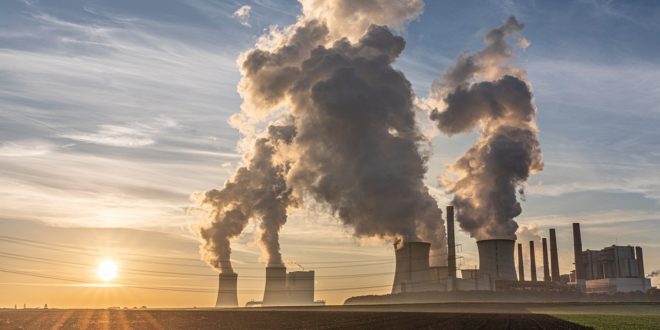The commercial sector produces more emissions than other industries. Manufacturing, packaging, transportation, and consumption practices contribute to greenhouse gas pollution. Environmentalists are assessing the challenges related to businesses’ emissions and defining sustainability opportunities and benefits across the economy.
Business owners can shrink their carbon footprints to minimize environmental, social, and economic distress. As eco-conscious consumers influence the market, companies can improve sales by adopting sustainable practices. Businesses can access many advantages when they reduce carbon emissions – here are 10 of them.
1. Conserve the Materials You Rely On
When organizations shrink their carbon footprints, they can conserve the manufacturing materials they rely on. Cotton accounts for nearly 33% of textile fibers. The plant grows in specific climates and relies on abundant resources, including water.
When companies release carbon emissions into the atmosphere, they contribute to climate change. As the global temperature rises, the global evaporation rate follows. More rapid evaporation increases precipitation in some regions and leaves others in prolonged droughts.
Rising temperatures and high precipitation rates degrade soil and its nutrient content over time. Without a stable and nourishing growth medium, farmers struggle to grow cotton. Fashion companies must minimize their emissions to preserve the textile.
Rising temperatures and climate change also cause wildfires, which contribute to deforestation. Without an abundant supply of wood, other manufacturers struggle to meet consumers’ material demands. Adopting sustainability practices can minimize emissions and attract more eco-conscious consumers.
2. Attract More Eco-Consumers
The green revolution is influencing the consumer market. About a third of individuals will pay higher costs for eco-friendly goods and services. Customers are searching for products that shrink their carbon footprints and influence a greener market.
Companies can attract a more significant portion of consumers by reducing their emissions and involving individuals in recycling programs. Business owners may develop post-consumer material recovery systems to minimize manufacturing emissions and build customer loyalty. The programs can also enhance a company’s transparency, which improves its marketability.
3. Support Employees’ Mental Health
Some businesses cut their carbon emissions by building green offices and industrial facilities. They add more windows to buildings and reduce their reliance on artificial light sources. Increasing employees’ access to natural lighting minimizes depression effects and improves natural sleep cycles.
4. Improve Your Employee Retention Rates
Employees also benefit from working in an atmosphere with a purpose. When companies set net-zero emission goals, workers feel like they are making a difference each day. Establishing a business model that aligns with employees’ values can improve retention rates.
5. Protect the Freshwater Supply
When companies release emissions into the environment, the increased evaporation rate causes droughts. Low freshwater accessibility can increase employee dehydration and compromise their health. Many manufacturers also rely on freshwater for production practices.
Companies manufacturing paper, metal, oil, wood, and more rely on large quantities of water. Without adequate access to freshwater, businesses are unable to meet consumers’ demands.
6. Reduce Energy Costs
Many businesses adopt renewable energy systems and high-efficiency appliances to shrink their carbon footprints. Solar is the most cost-effective electricity source on the market, helping companies save money. Individuals are also lowering utility costs by installing smart appliances.
Office buildings and manufacturing facilities may benefit from installing automated thermostats. The technology identifies causes of energy loss and enhances resource conservation. Business owners may also install smart lights and other appliances to improve their monthly savings further.
7. Minimize Your Risk for Future Fines
When businesses reduce carbon emissions, they can also prevent fines. Eco-conscious nations are developing sustainability regulations like the Clean Air Act. When companies release a high quantity of carbon emissions, their risk of receiving fines increases.
Global organizations are establishing net-zero emission goals to meet by 2050. They are regulating industrial emissions to hold producers accountable for their pollution. Countries may develop stricter sustainability laws in the future and unsustainable companies may be at risk of receiving fines.
8. Protect Employees’ Health and Well-Being
Companies can also reduce carbon emissions to protect their employees’ health and well-being. In regions with high greenhouse gas emission rates, individuals experience unpleasant health complications. Inhaling air pollutants can cause asthma attacks, lung cancer, and other respiratory diseases.
9. Preserve the Global Food Supply
Reducing greenhouse gas emissions also protects employees’ health by preserving the global food supply. Preventing soil erosion can enhance agricultural production and minimize global hunger. Similarly, food production companies can meet consumers’ needs by reducing livestock emissions.
10. Promote Active Employee Lifestyles
The final reason companies should reduce carbon emissions is to promote active lifestyles. Businesses can establish bike-to-work challenges, which shrink their carbon footprints and improve employee health. Improving employees’ activity rates may reduce individuals’ risk of cancer, heart disease, and high blood pressure.
Company owners may also work with the local community to improve low-emission transportation accessibility. Businesses can enhance consumer loyalty and build brand awareness by sponsoring public transportation systems.
Reduce Carbon Emissions Today
Today, business owners can reduce their carbon emissions by investing in and installing renewable energy systems, developing practical sustainability training for their employees, adopting efficiency-enhancing technologies in facilities, and more. How will your business choose to create a greener world?
 Alternative Energy HQ solar power for homes, wind energy, and bio fuel issues
Alternative Energy HQ solar power for homes, wind energy, and bio fuel issues







